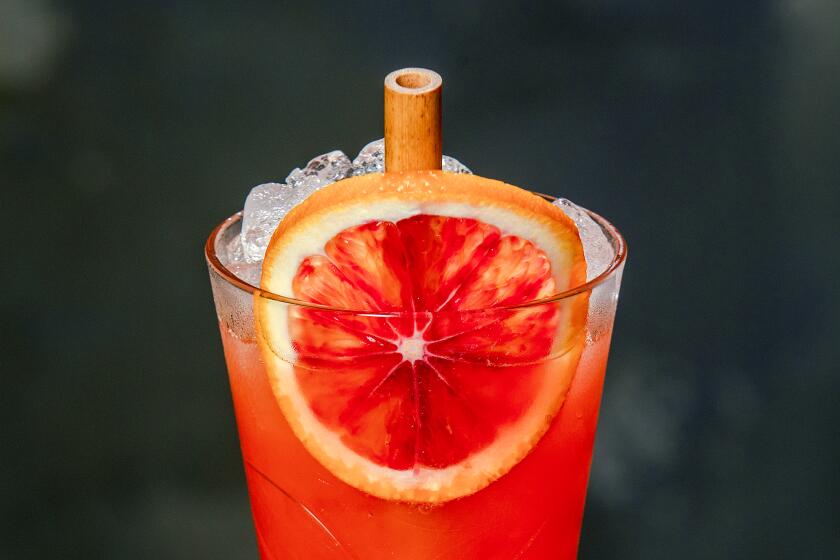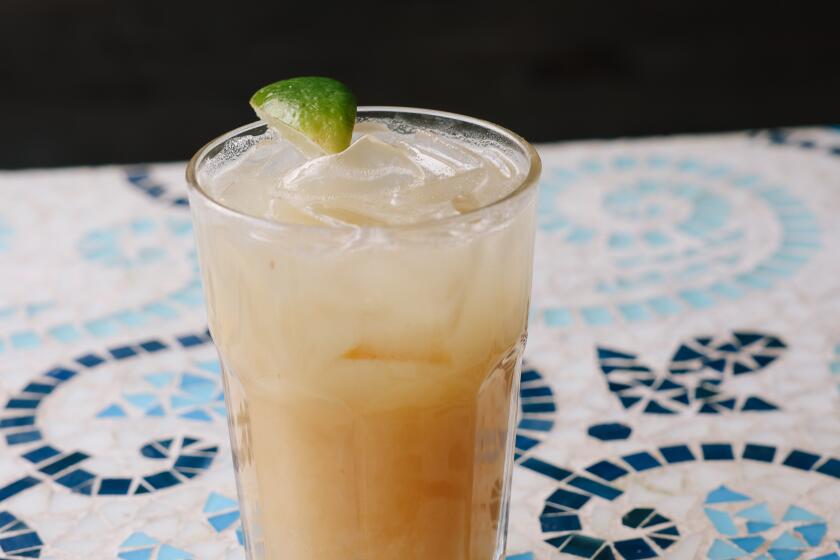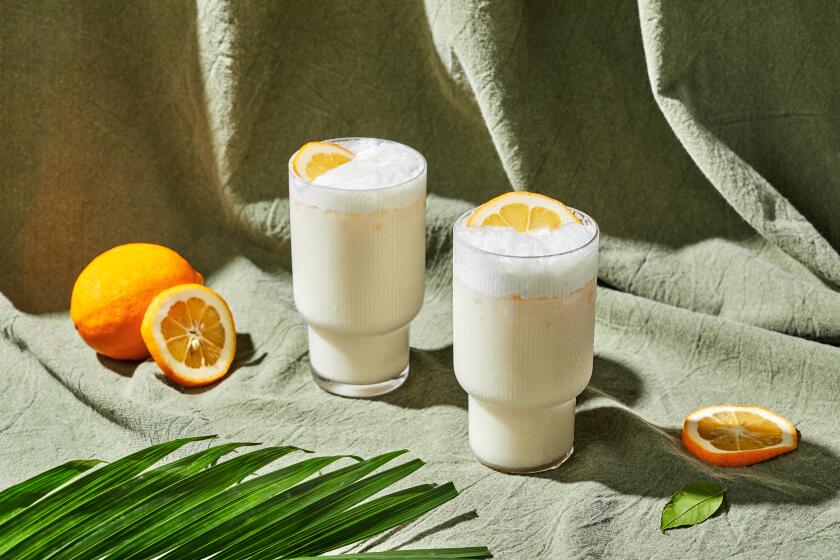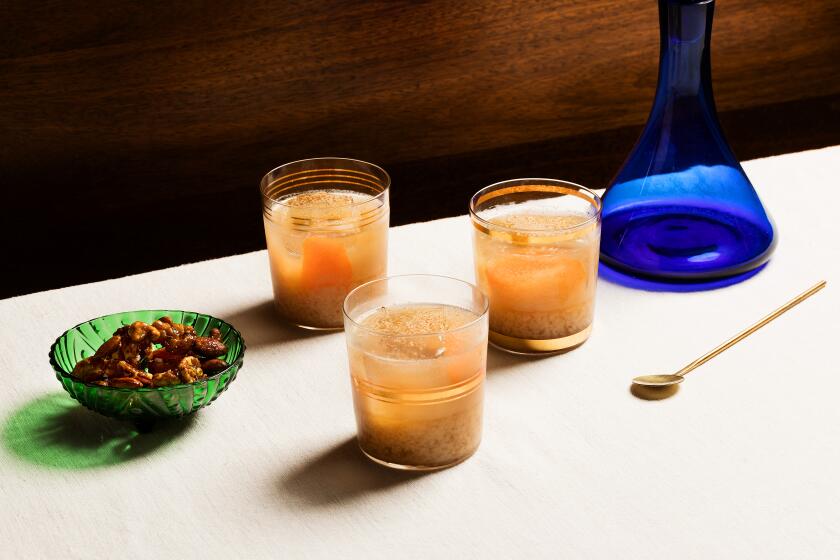Whisper Campaign
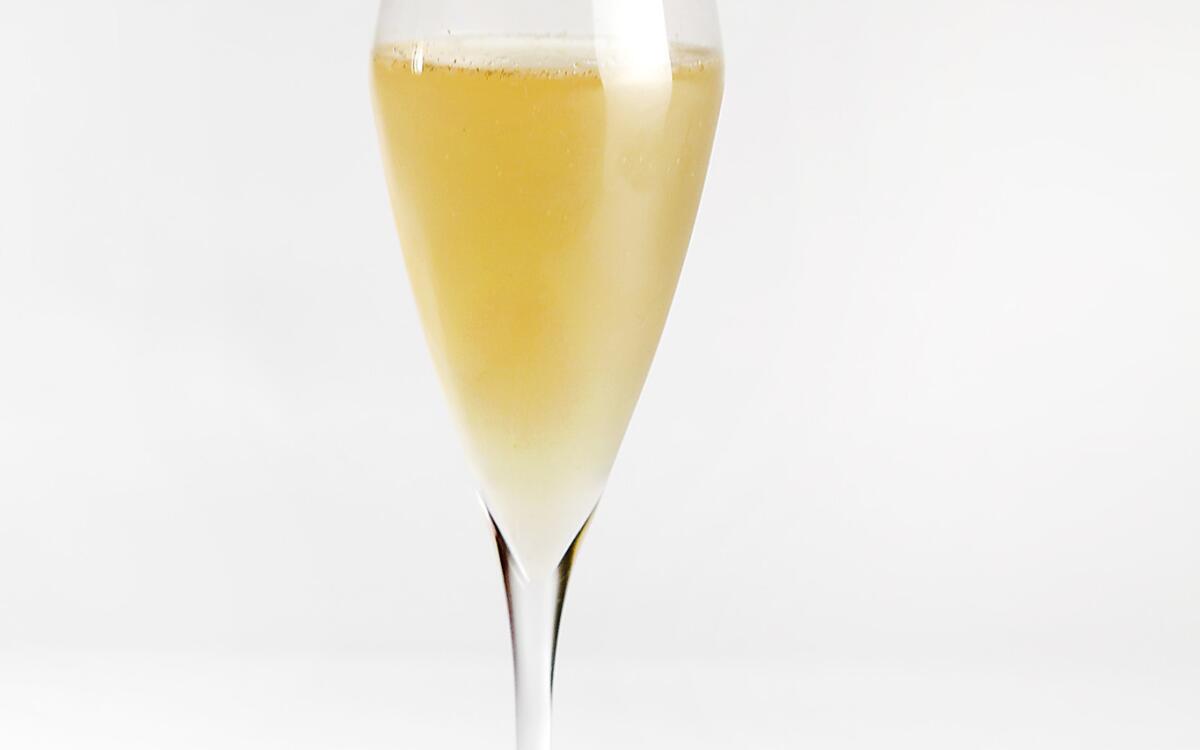
Alex Day is standing behind the custom bar at the headquarters of Proprietors, the drinks consulting company he and his partner David Kaplan recently set up in downtown Los Angeles -- an office cum cocktail lab that they’ve dubbed Chapter & Verse. “Champagne is always a good idea,” Day says as he carefully pours sparkling wine along the spiraled handle of a bar spoon that leads into a flute partly filled with Armagnac, Royal Combier and a couple of dashes each of Angostura and Peychaud’s bitters. “Energy, excitement, playfulness, celebration, these are things that Champagne taps into.”
Especially on New Year’s Eve and when bubbles -- whether Champagne, house-made seltzer or carbonated spirits -- are showing up on more bar menus. “It’s definitely something we’ve been thinking a lot about,” says Day, who along with Kaplan is opening a bar called Demi Monde in New York in February with “some focus on sparkling drinks.” That includes “highly charged” seltzers, sodas, phosphates and effervescent cocktails such as the one mentioned above, titled the Field Marshal.
But you don’t need a carbonating system to enjoy some sparkle, just a bottle or two of Champagne (or sparkling wine -- the drier the better). “You can pretty much top off any cocktail with Champagne,” Kaplan says. “It’s not a boilerplate category.”
The early 19th century original Champagne cocktail is simply a bitters-soaked sugar cube in a glass of Champagne. But bubbly lends itself to creativity. In the Chapter & Verse office, stocked with a spirits library that includes a not-yet-released gentiane liqueur, a grapefruit elixir and lactic acid, along with every imaginable type of liquor, Day shakes a mixture of camomile-infused Calvados with lemon juice, yellow Chartreuse and simple syrup, then pours it into a flute, tops it with Spanish sparkling cava and calls it the Whisper Campaign.
“I can’t get away from camomile and Calvados,” Day says. Both have an affinity for the sparkling wine, as do a lot of ingredients, including some you might not expect.
“High-proof bourbon shouldn’t work with Champagne, but it does,” notes Kaplan, referring to the classic Seelbach (bourbon, triple sec, bitters, Champagne).
“And I’ll never pass up a French 75; gin works especially well with Champagne,” Day says, noting gin’s floral qualities.
At Ray’s and Stark Bar at the Los Angeles County Museum of Art, beverage director Paul Sanguinetti shakes gin with Aperol, lemon juice, orange bitters, basil and mint, adds it to a St-Germain-rinsed glass and tops it with rose Champagne. He’s calling it Rose Wishes (and Caviar Dreams), gilding the lily with its garnish: a tiny dollop of sturgeon caviar on top of a basil leaf.
“I’m looking for good acidity and, depending on what I’m mixing with, not too much of a yeasty, brioche character but notes of apple and citrus,” Sanguinetti says. “Though with a brandy cocktail, the toasty notes actually do well. Balance is the most important. And it’s likely that if your Champagne’s not balanced, then your cocktail won’t be balanced.”
That doesn’t mean breaking the bank with ’95 Krug “Clos d’Ambonnay.” Among Sanguinetti’s recommendations are Cremant de Bourgogne -- French sparkling wine not made in the Champagne region -- and South African sparkling wines from Graham Beck (including its rose) priced at less than $20. “There are great cavas that I like using because of their value, good quality and flavors that are going to mesh well,” he says.
Though he might prefer a Ruinart Brut Blanc de Blancs Champagne, Day says he’s also a fan of Spanish cava and Portuguese espumante. Or try the Napa sparklers from French Champagne makers such as Mumm. But he shies from Prosecco for what he describes as its “wineyness.”
Don’t rule it out entirely, however. There’s an entire section of sparkling cocktails on the menu at Hatfield’s on the edge of Hollywood, all made with Prosecco, including the Hendrick’s Experience (Hendrick’s gin, Thai basil, lemon, Prosecco), Festivus (Calvados, pear, bitters, Prosecco) and a passion fruit pisco sour (pisco, lemon, passion fruit, egg white and Angostura bitters).
Hatfield’s sommelier Jonathan Baird says he uses Adami Bosco di Gica Prosecco di Valdobbiadene for its balance of minerality and ripe fruit; it retails for about $17. Baird transforms amaro, a digestif, into a lively aperitif called Da Milano by adding Prosecco to Ramazzotti herbal liqueur and fresh lemon juice. “It’s a nice way to kick off a party,” he says.
Meanwhile, Josh Goldman, the sommelier at Michael Voltaggio’s Melrose Avenue restaurant Ink, is sticking to cava. “The thing I like most about cavas ... is that there’s a little more subtlety to them, which lends itself to being almost a kind of a neutral spirit, depending what you mix in with it. Nice and dry and fresh and crisp and with good acidity, that’s what I look for in cavas. It goes pretty much with everything.”
It’s used in a drink that bar manager Devon Espinosa makes called It’s the End of the Year as We Know It: spiced apple cider, fresh lemon and ginger juice and dry cava. “Winter flavors, perfect to end the year with,” says Espinosa.
In a cocktail shaker filled with ice, combine the camomile-infused Calvados, lemon juice, Chartreuse and simple syrup; shake and strain into a chilled flute. Top with dry sparkling wine.
Get our Cooking newsletter.
Your roundup of inspiring recipes and kitchen tricks.
You may occasionally receive promotional content from the Los Angeles Times.












